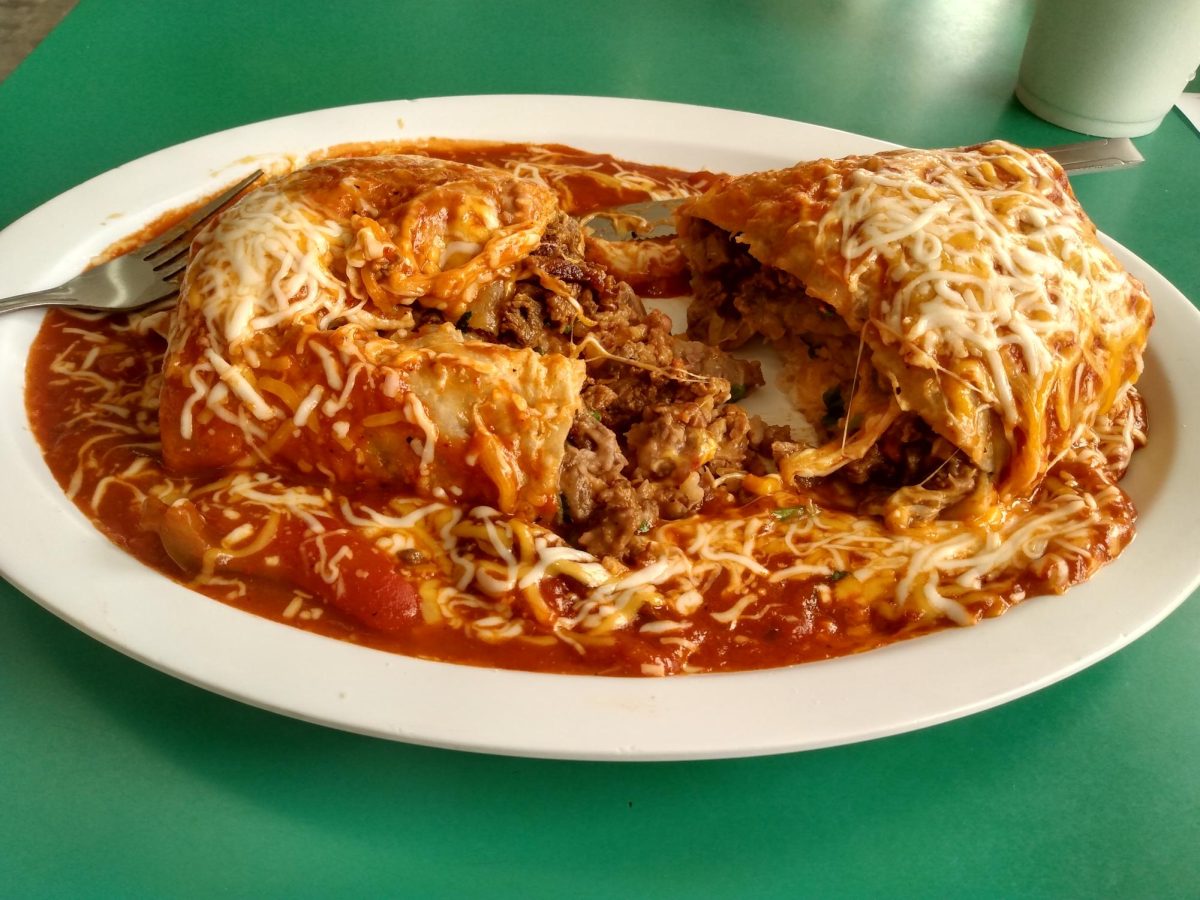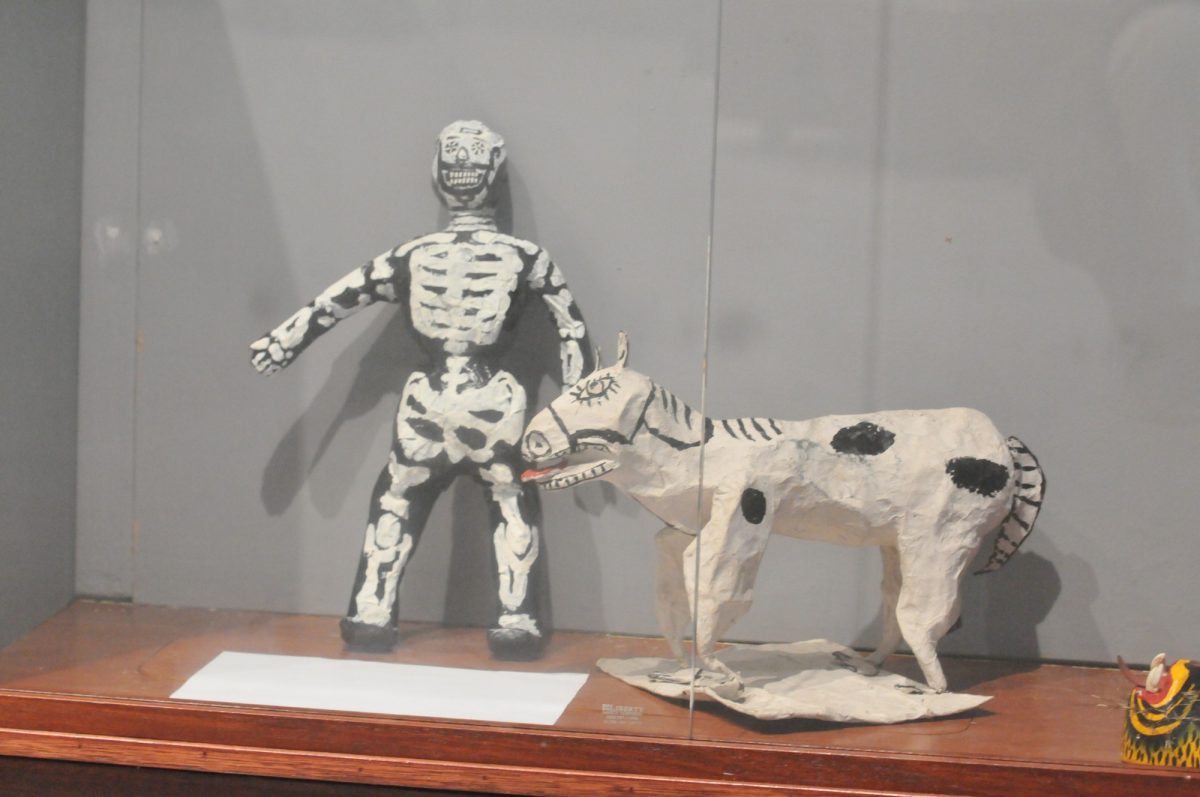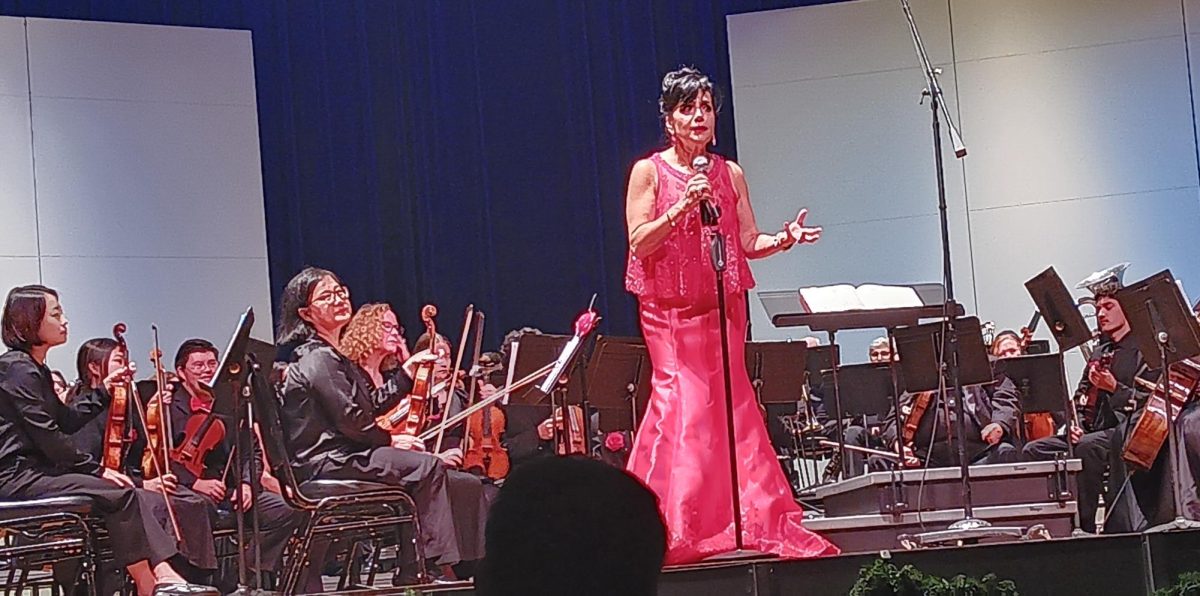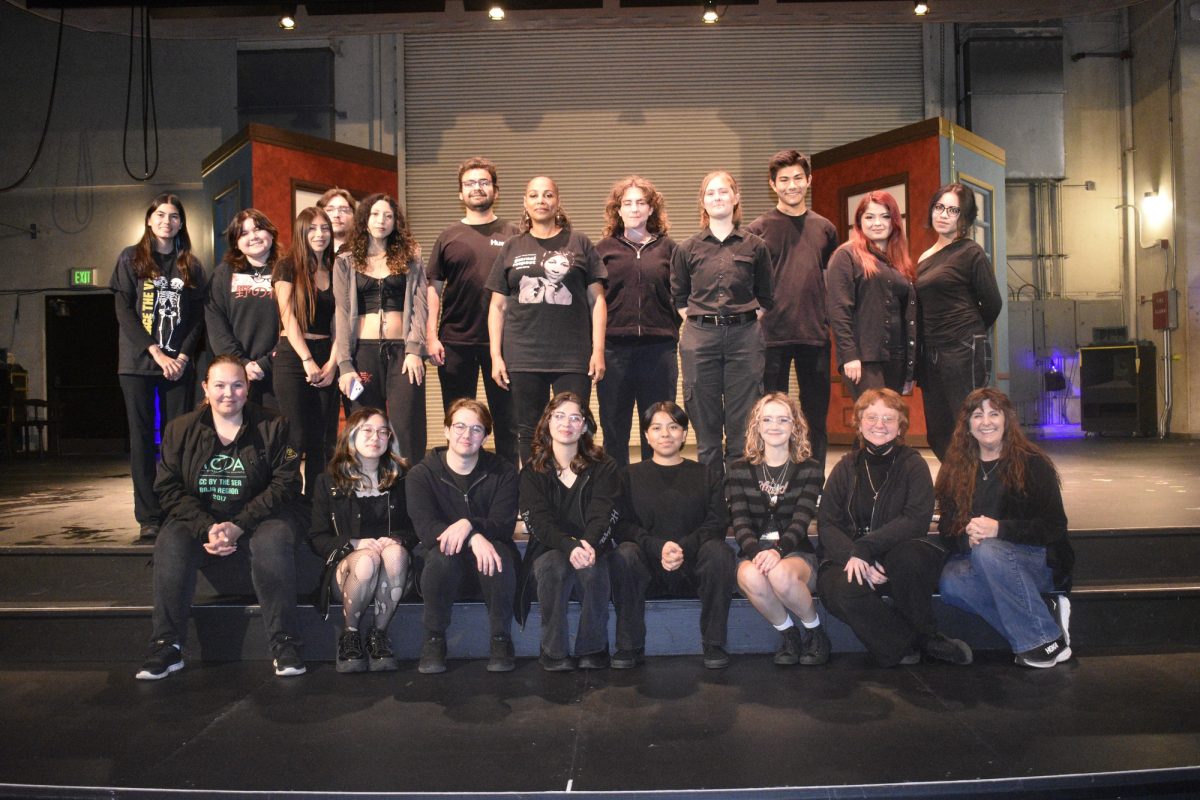Jessica walks up to the altar and kneels down in front of it. She is holding a bowl of fresh fruit filled with apples, strawberries and cantelope that was Tio Juan’s favorite; she is offering it to his spirit for it is believed that it has come back.
The family gives an ‘ofrenda’ or an offering, to celebrate the lives of those loved ones whom have passed on.
“I’ve always loved learning about my culture,” Miguel Ruiz, engineering major, said. “Staying in tune with your culture is something to be proud of. By celebrating El Dia de los Muertos, I’m learning more about my roots.”
Dia de los Muertos, which means Day of the Dead, is a Mexican tradition where families remember their dead and the continuity of their lives, Ricardo J. Salvador said in his book “What do Mexicans celebrate on Day of the Dead.”
“This celebration shows us that we shouldn’t be scared of death as other cultures show us to be,” Alejandra Maldonado, undeclared major, said.
On Monday, the Anthropology Museum present the fifth annual Dia de los Muertos celebration.
There will be a veiwing of Dia de los Muertos themed folkart and an altar for the deceased in the art building, Room 301 at 1 p.m.
MECh.A (Movimiento Estudiantil Chicano de Aztlan) and SOL (The Student Organization of Latinos),have joined together to also celebrate El Dia de los Muertos on campus.
Both clubs decided to unite and organize the event together instead of doing two separate events.
“The bigger the event, the more impact on the campus,” Dianne Martinez, SOL adviser, said. “Both clubs have the same purpose, different views, but the same purpose.”
The festivities will take place today.
The event will take place from 1p.m.to 2p.m. at the library lawn.
There will be altars set up, and free ‘champurrado’ and ‘Pan de Muerto’ will be served. “Champurrado is a Mexican beverage that is somewhat like a thick hot chocolate,” President Adan Andrade of MECh.A, said. “It is made of chocolate, corn flour (maza) and milk. Pan de Muerto is Mexican sweet bread specially made for that day.”
President Claudia Cordova of SOL said the celebration will teach students about a different type of holiday.
Lik, a Spanish rock band, will be playing live from 10 a.m. to 2 p.m at the library lawn.
“The band is donating their time,” Ana Nogal, SOL ICCR (Inter Club Council Representative), said.
Students and faculty will have a chance to participate hands-on with the activities. There will be an arts and crafts table where students will get the chance to make their own masks, skeletons and face painting.
“We will have masks, feathers, glitter paints, as well as different things for people to decorate and be creative,” Nogal said. “There will also be chalk so that people can write messages on the ground to their family members who have passed.”
A cemetery will also be set up at the library lawn with fake tombstones that will be decorated.
“We’re putting up tombs on our yard and spray painting them with traditional Mexican indigenous names,” Ruiz said.
Five altars will be set up so that people may pay tribute to whomever they want. Each will have its own significance.
“They will be for famous people, revolutionists, family and friends, the victims of September 11, and the last one will be open,” Nogal said.
The event is being sponsored by the FYE (First Year Experience), LBSA (Latino Business Student Association), Puente Club, CASA (Community Action for Student Achievement), the LLN (Latina Leadership Network) and Puente 18.
“We are really happy we got money and support for the event,” Martinez said. “The purpose of this is to educate, not to profit.”
Day of the Dead origins come from ancient Mexican history, where it was led by the Aztec goddess Mictecacihuatl, known as “Lady of the Dead.” It is celebrated on Nov. 1-2.
“The culture of the Aztecs believed that spirits of the departed came back,” Cordova said.
If you’re not familiar with the Mexican culture, it’s easy to mistake this tradition to a Halloween celebration. But Dia de los Muertos has nothing to do with Halloween.
“Dia de los Muertos means an expression of a culture that I’ve never really lived,” Sandra Valdivia, English major, said. “We’re used to celebrating Halloween; however, this gives me the opportunity to explore a Mexican tradition.”
Salvador said during the Postconquest Era, Spanish priests and the church named “All Saints Day” as a Christian holiday in honor of the dead. In its attempt to keep the tradition as “a tragic image of death and a serious day of prayer,” this idea didn’t set well with the people of Mexico. As a result, the church’s celebration of “All Saints Day” turned into what it is today, honoring the dead with color, candles and joy.
“Some churches are helping by setting up altars; they are catering to the public,” Valdivia said. “They are allowing us to express our culture instead of accusing it to be something from the devil.”
It is believed that on Dia de los Muertos, the spirits of those who have passed come back to life. Family members visit the graves and go through a ceremony of cleaning them up, supplying them with fresh flowers, lighting candles and also painting the tombs, Alexis Ciurczak and Jose Rangel said, who have dedicated a web page to the tradition of El Dia de los Muertos.
“We don’t do anything special here for El Dia de los Muertos, but I know my grandparents in Mexico do,” Maldonado said. “I remember being small and going to Mexico and helping my grandparents decorate the altar with food and picures.”
Ciurczak and Rangel said altars are set up in dedication to the spirits of their deceased loved ones. These are filled with objects that were pleasurable to the departed when still in life, to commemorate their lives. They are decorated with food, water, flowers, candles and pictures.
“The altar is a place where you honor your loved ones. Candles are lit so the spirits know where to go to get to the altar,” Ruiz said. “The person who sets up the altar fills it with his or hers loved one’s favorite possessions as to say that they haven’t been forgotten.”
Ruiz’ family is setting up their altar outside so that people can see them celebrating a different culture.
‘Calaveras’ or skulls, are also an important part of this tradition. However, they are not represented in a scary way. They are portrayed as colorful, bright and cheerful. They represent the departed loved ones in their occupations and hobbies.
Tradition holds that the delightful skeleton figures bring back fond memories and cause the grieving ones to smile. Three ‘calaveras’ are to be placed on the second level of the altar to represent trinity.
All altars must have water, salt and bread. Water signifies thirst and represents purity. Salt is used to season the food for purification. Finally, the bread represents food needed for survival.
‘Papel picado’ and marigold flowers are also very popular to this celebration. Papel picado is Mexican cut-paper and is to be tossed over the altar. Marigolds are flowers traditionally used as “flowers for the dead.”
“I want my sisters to feel comfortable celebrating something different like El Dia de los Muertos,” Valdivia said. “They don’t always have to assimilate to what everyone else is doing, like celebrating Halloween.”







